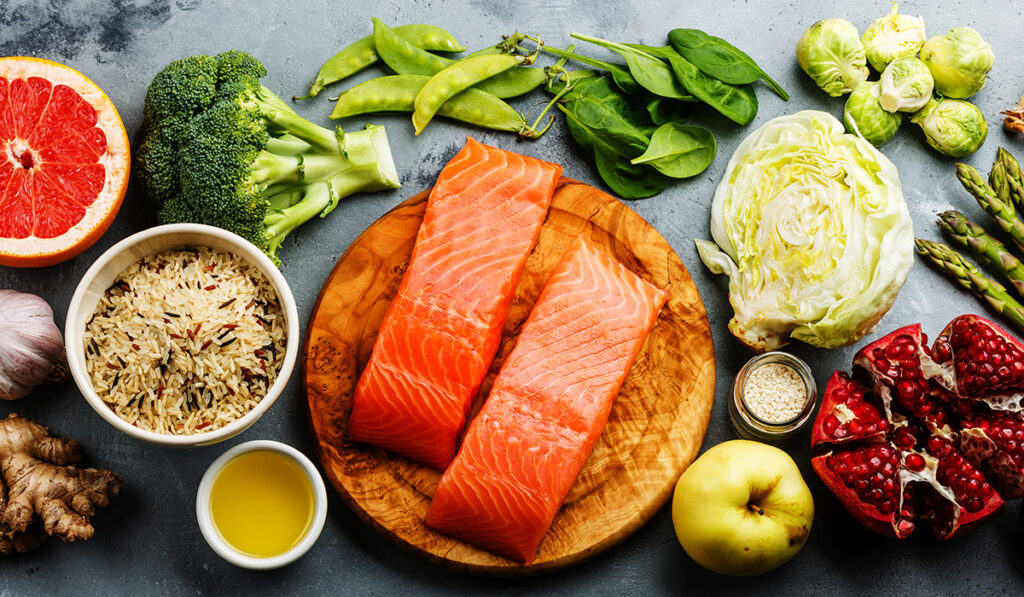If you’re reading this, you may have already tried (or are trying) the conventional weight loss approach, which is low calorie, lots of cardio, and the belief that hunger pangs are just a way of life if you’re trying to lose weight. A badge of honor even. There’s a better way! One that leaves you feeling satisfied, nourished, and seeing results along the way. Have you been curious about how many calories you should be eating to lose weight? Or do you think you need to eat low-calorie to see results?

Your Body Needs Energy
Even if you lay in bed for the entire day, your body would still burn calories just performing the functions needed to keep you alive, like digesting food, breathing, delivering blood and oxygen to your body’s tissues, creating new cells, and so much more. This is called your body’s Basal Metabolic Rate. Most people burn 1200-1400 calories or more without even performing normal daily activities. If you take your BMR and add all your daily activity, you’re likely burning thousands of calories, which is why it’s so important to eat enough to fuel that calorie burn. If you don’t, you’ll only slow your body’s ability to function, meaning that your body won’t be willing to let go of the fat stores that it views as vital to survival.
Traditional Weight Loss Methods
If you’ve tried the conventional weight loss approach, you’ve likely eaten 1200 calories a day, you’ve stopped eating avocados because they have too much fat, you’ve weighed yourself daily, and you’ve done so much cardio. These methods sometimes work in the short term, but they are hard to stick to for more extended periods. Additionally, you may find that your results diminish over time since your body enters a form of starvation, conserving energy where it can account for fear that it won’t be able to obtain more (in the form of food) readily. In other words, low-calorie diets activate your body’s primal survival instincts. Whether we’re talking about calories, macro percentages, or even specific foods, there’s no one-size-fits-all when it comes to losing weight. But one near-universal truth is that even if your goal is weight loss, you need more than 1200 calories to keep your body healthy and happy.

Focus on Quality, not Quantity.

While some people are certainly eating too much, that’s not the most common issue. Instead, people focus on how much they eat, so they forego food quality altogether. All calories aren’t created equal, and our body uses food as information. If your goal is weight loss, focus on eating a mix of nutrient-dense foods, including high-quality protein, lots of veggies, healthy fats, and some fruit. If you tolerate them, beans and gluten-free grains may be a part of your plate in relatively small amounts. If you’d like more information on what to eat to lose weight check out our previous post.
Eat less frequently
Let’s be clear we’re not saying eat less, but rather eat less frequently. The advice for weight loss is often to eat 4-6 small meals a day, but it’s usually better to stick to 3 square meals instead. Though eating is essential, it’s also an inflammatory activity, meaning it’s best to give your body bouts of rest in between. An added benefit here is that your digestive tract has a chance to clean and repair between meals. Additionally, when you eat a little less frequently, your body will have less frequent rises in blood sugar, and in turn, less need for insulin as well. Since insulin encourages the storage of fat and limits your body’s ability to tap into fat stores, this is a good thing. This is why low-carb diets tend to be beneficial for weight loss, too.

Manage your stress
Stress wreaks havoc on our overall health, and the area of weight loss is no exception. If you’re experiencing chronic stress, you’ll end up with elevated cortisol and your sympathetic nervous system in overdrive. Without adequate time in parasympathetic (rest and digest) mode, your body thinks it’s continually under threat. What evolved as a survival mechanism to give you the ability to outrun a tiger or other dangers has turned into chronic, uninterrupted stress. This is bad for our waistlines and our health as a whole. Make time for stress relief and joy each day, whether that includes walking your dogs, meditating, exercising, calling a friend, journaling, or something else. In addition to prioritizing this time for yourself, remember that the only thing we can control about stressful situations is how we respond to them.

